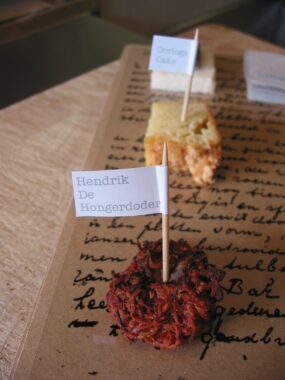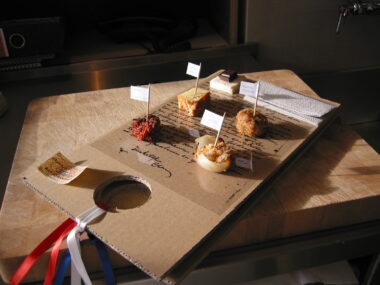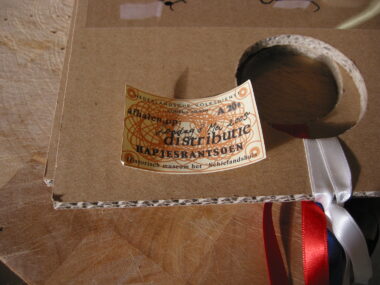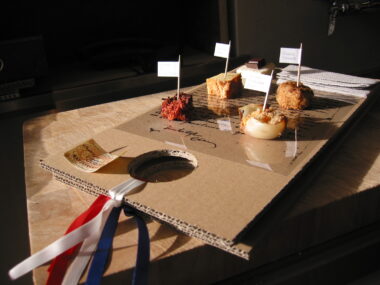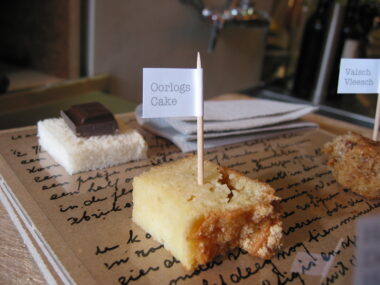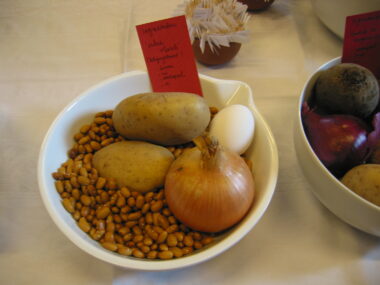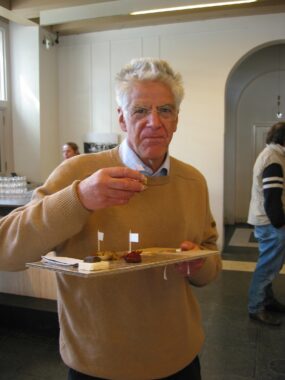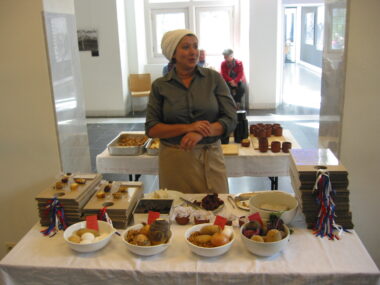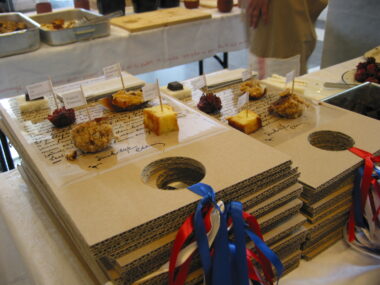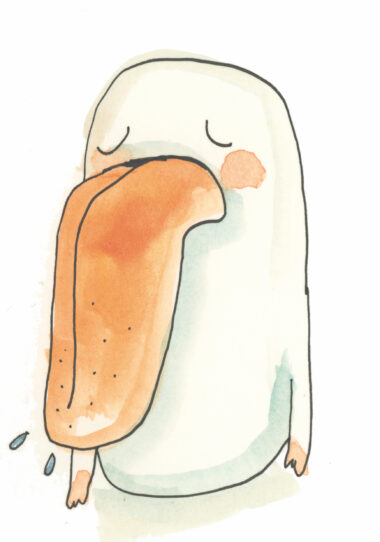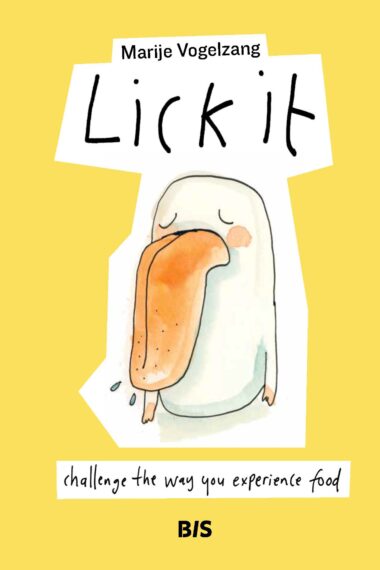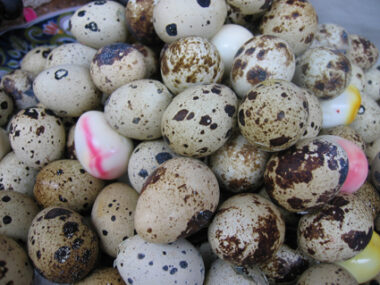How can we get people to experience war food?
When Rotterdam was severely bombed at the end of WW2, a so called ‘hunger winter’ emerged and many people died of starvation. The historical museum ‘Het Schielandshuis’ in Rotterdam made an exhibition about the hunger winter and asked me to contribute in an edible way.
The exhibition was called ‘Black confetti’ referring to an expression that children had proclaimed when the city got bombed. All the black ashes falling from the sky looked like magical black confetti. The hunger winter is infamous among Dutch people because it was a time where people had been eating tulip bulbs. I was curious about what other things were on the menu at the time and went to the resistance museum to get some beautiful handwritten recipes of dishes that could be made with the scarce ingredients of that time.
The recipes were handwritten but copied from newspapers. At the time, the culinary section of newspapers instructed housewives how to make something from hardly anything. Interestingly I found a recipe for ‘war-cake’ that didn’t replace sugar but did replace wheat flour with potato flour. Of course the hunger winter came gradually and initially only a few items became scarce. People would use ‘ration-coupons’ to get their ration of the food supply.
I was curious about the flavours of the time and wanted to bring them to the audience of today. I recreated the recipes literally but I made them into small bites that were presented on a cardboard sheet. Like a ration. When entering the exhibition, visitors would get a ration-coupon and got a cup of surrogate coffee.

visitor of the Black Confetti exhibitionIf my brother would have eaten this, he would still be alive.
What I didn’t realise at the time was that some visitors were actually children during the time of war. When they ate the food they tasted flavours they havent been tasting for over 65 years. For some people this opened up locks in their brain and brought back long forgotten memories. Memories of when they were small. When their fathers and mothers were still alive. Memories of being in the kitchen with their siblings during the war. Eating, playing, bombs.
The phenomenon of tasting or smelling something and instantly, involuntary retrieving forgotten memories is something most people have experienced before. Scent and flavour have a direct connection to parts of the brain that language is not always able to reach. Marcel Proust wrote about this effect in ‘Remembrance of things past’ when he ate a madeleine soaked in tea and involuntarily remembered a detailed scene with this Aunt Léonie. The Black Confetti project is a good example of the ‘Proust effect’. After this project I have done many tests and events with elderly people and food they ate as a child. The Proust effect is not easy to manipulate as it comes with a fine balance of ingredients and contexts but I have managed to help many people to trigger a memory that was part of their lives but long forgotten. It’s like finding pieces of a puzzle with every bite.
Black confetti was performed at
Museum het Schielandshuis
in Rotterdam
The film about war food memories was made for
The Future of Storytelling
New York
The film was made by
Joey de Leeuw
and featured his grandmother Jopie and my daughter Juni


